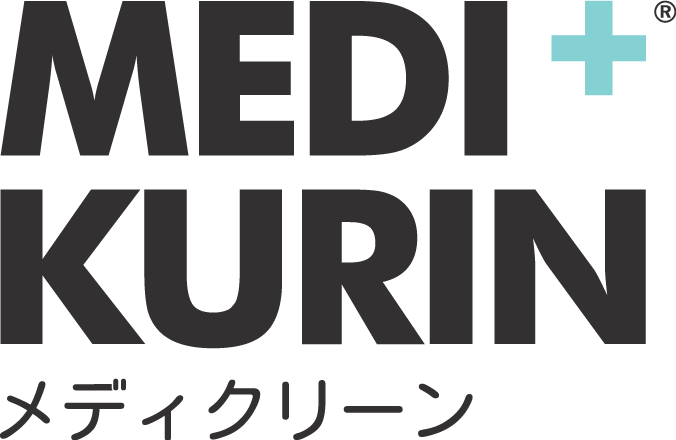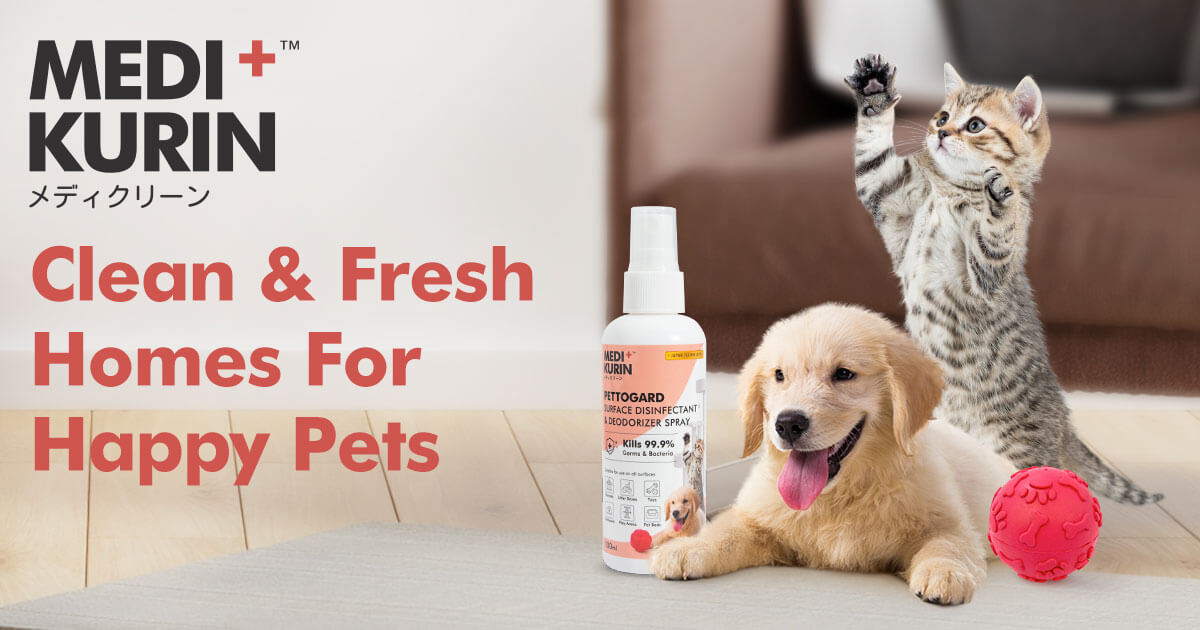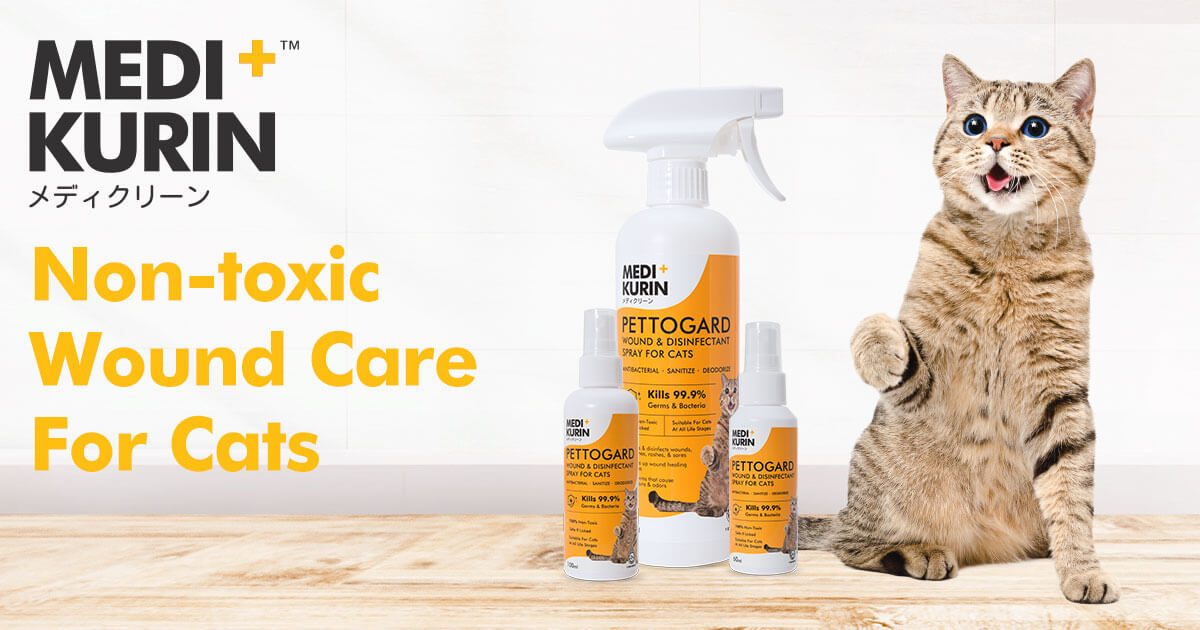Are you a new pet owner of a cute four-legged furry friend? It must be quite exciting and scary to now be responsible for another living creature. Unfortunately, owning a pet might invite unsolicited comments from relatives or friends that only see pets as dirty, disease-carrying, and dangerous. All comments that are wrong, mind you. What they don’t understand is that those misconceptions stem from poorly cared-for pets! Doing your due diligence in nurturing a happy, healthy dog or cat prevents them from falling ill and smelling bad.
Here we have compiled 5 main things pet owners should know about to help your pets live a comfy, clean, and germ-free life.
1. Your pet’s belongings are home to a mouthful of germs and bacteria.
Looking forward to spoiling your cats and dogs with pet toys? Keeping pets engaged with interactive pet toys is important to keep them from gnawing at your stuff, but you should still be mindful of your pet’s hygiene! Your pet’s favourite chew toys, balls, tug-o-war rope, or catnip toys are breeding grounds for a wide range of oral bacteria.
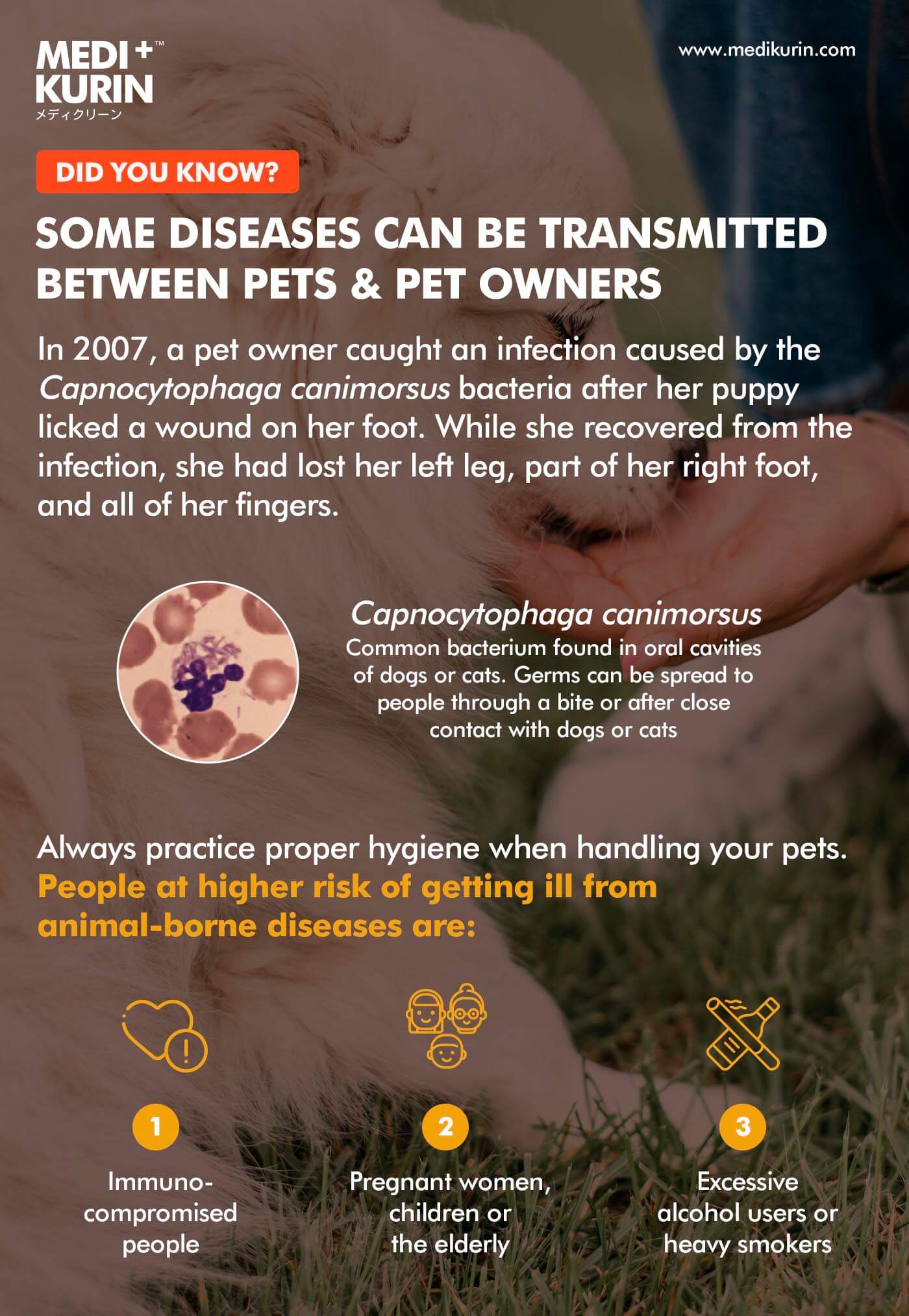
Hold on, before you worry, researchers have classified these infections to mostly affect people with weakened immune systems. Still, pet saliva is home to many bacteria, so it’s best to keep toys, and pet bowls clean. We should also mention that cat owners aren’t safe from infections as well. Cat scratches, bites, and saliva can seriously put cat owners at risk too! It is best to keep all your pet’s hygiene up to par with how you would a human baby’s toys.
On top of slobbering all over their toys, you have to take into account that your pet will most likely drag their toys around the house, picking up additional dust, grime, and germs along the way. The toy becomes a moist environment that encourages bacteria to grow over time. This leads to the toys growing slimy and musty-smelling.
We recommend using MEDIKURIN PettoGard Odor Remover Spray to keep your pet’s toys clean after playtime. We’ve formulated a non-toxic, pet-friendly solution that is able to kill most bacteria that have been cultivated on hard or soft surfaces. All you need to do is generously spray onto your fabric or rubber toys. On harder surfaces like rubber chew toys or balls, wipe off the excess solution after 10 to 30 seconds. For fabric-based toys, let the solution air dry.
2. Reusing food or water bowls without cleaning in-between uses may lead to food contamination.
For pet owners with many animals in the house, it’s good practice to have separate bowls for each pet. Cat Flu, for example, is often transmitted between cats and kittens that share the same water or food bowls. Still, if you are unable to prepare separate bowls for your pets, it’s best to always clean them between servings.
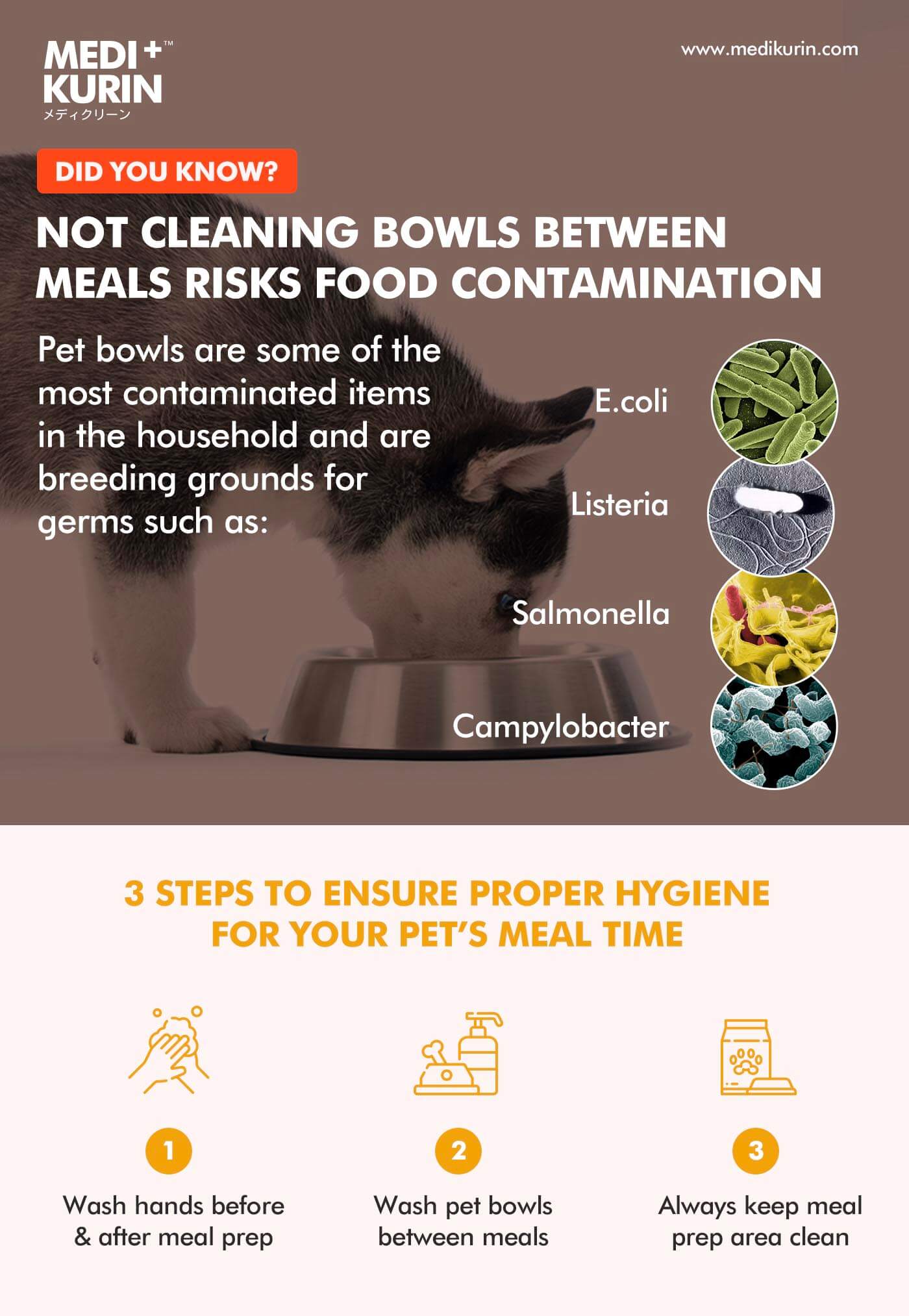
When feeding your furkids, it’s best to serve only cooked food to prevent any foodborne bacteria, like Salmonella, E.coli, Campylobacter, and Listeria from infecting your pets. While animals might have stronger immune systems than humans, these foodborne pathogens can still cause diarrhoea, food poisoning, and vomiting!
Use MEDIKURIN PettoGard Odor Remover Spray to make sure cross-contamination from food or water bowls is kept to a minimum. It’s best to rinse your food or water bowls before filling them up. Remember: the solution should be properly dried off before using the bowl again.
3. If you do not clean pet beds, kennels, cages, scratching posts, and fluffy pillows, they will grow dirty, slimy, smelly, and become infested.
Think about that place your pet likes to rest at the most. Whether it be their cages, kennels, pet beds, or scratching posts, it is best to keep it as clean as you can. It’s like how we humans have to clean and wash our sheets at least once a week. If you leave your sheets unwashed for two weeks or more, well, then the bed could start smelling very bad and possibly invite harmful bedfellows into your room.
However, unlike humans, pets don’t use their sleep spots the way we do. For one, pets don’t change out into fresh clothes that protect their fur or skin from the surface of the bed. Instead, they have fur coats that carry all of the day’s dust, dirt, and bugs that will get on their beds.
On top of these areas adopting a grimey, yellowish appearance, they will also start to smell like your pets. As endearing as it may sound, it’s best to stop your pet’s bedding from getting into an overused and under-washed state. Not cleaning these areas could seriously attract flies, mites, and fleas!
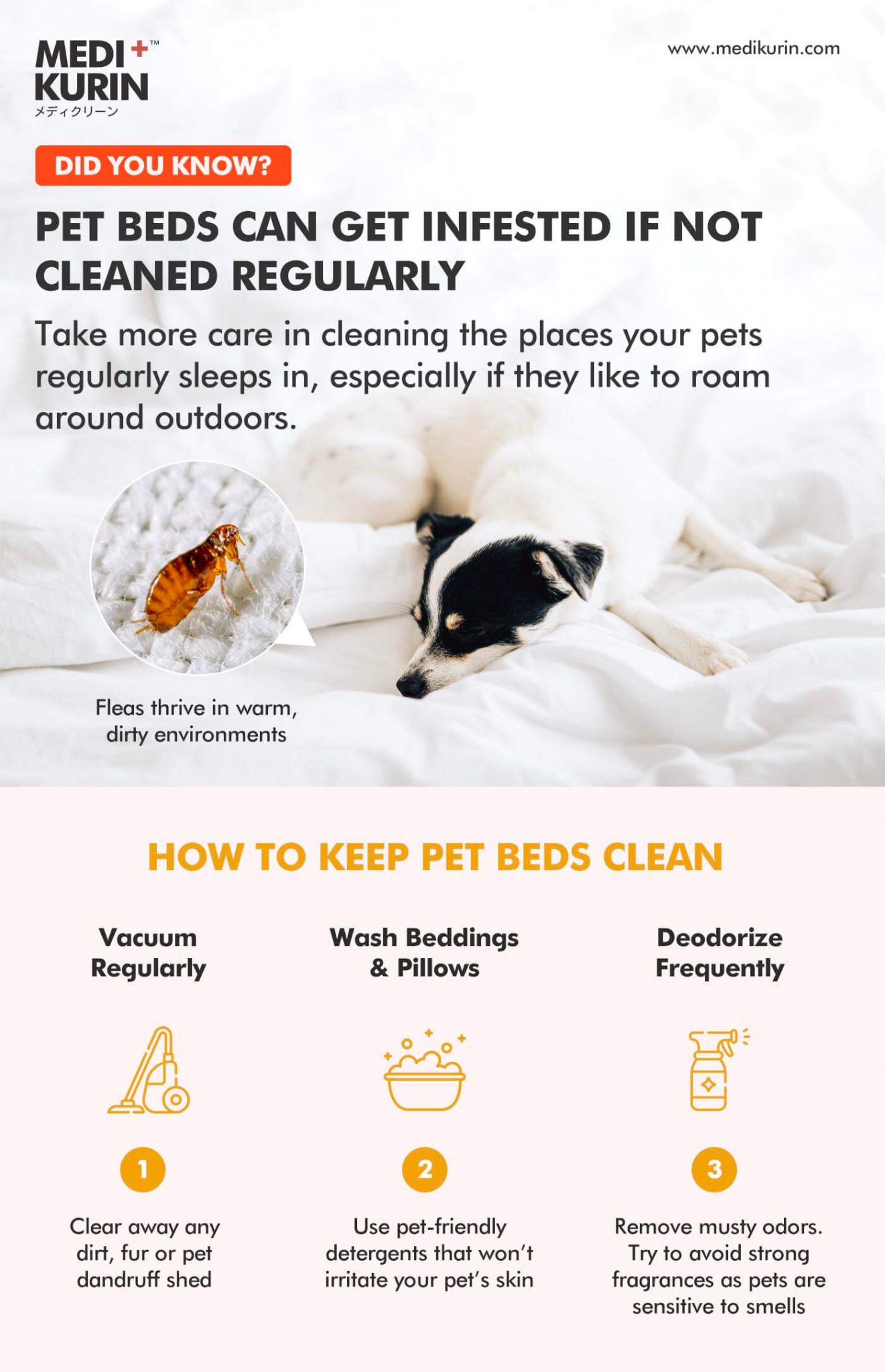
Not to mention, once these pesky, blood-sucking insects get too comfortable, they could spread to you and your furniture. So make an effort to give their resting spots a clean every now and then!
Too busy to pop your pet’s beds in the wash? Use MEDIKURIN PettoGard Odor Remover Spray as an on-the-go daily spray. Our pet-friendly solution keeps germs at bay until you have time to machine wash your pet’s bedding materials. Our near-neutral pH spray is simple to use, non-corrosive, and hypoallergenic that doesn’t leave any irritating residues once dried. Just spray on and let the solution air dry on soft surfaces. For hard surfaces, wipe off 30 seconds after spraying.
4. You need to do more than just pick up poo and pee if you want to keep your environment clean and fresh-smelling.
No matter how you go about dealing with toilet time with your pets, it’s good practice to clean up after them. This is especially so if you let your pets relieve themselves in a litter tray, on your front porch, or in an outdoor litter box. Bad pet owners sometimes leave their pets to do their business outside by themselves and not clean up after them. This lack of care is what gives responsible pet owners, like you, a bad reputation.
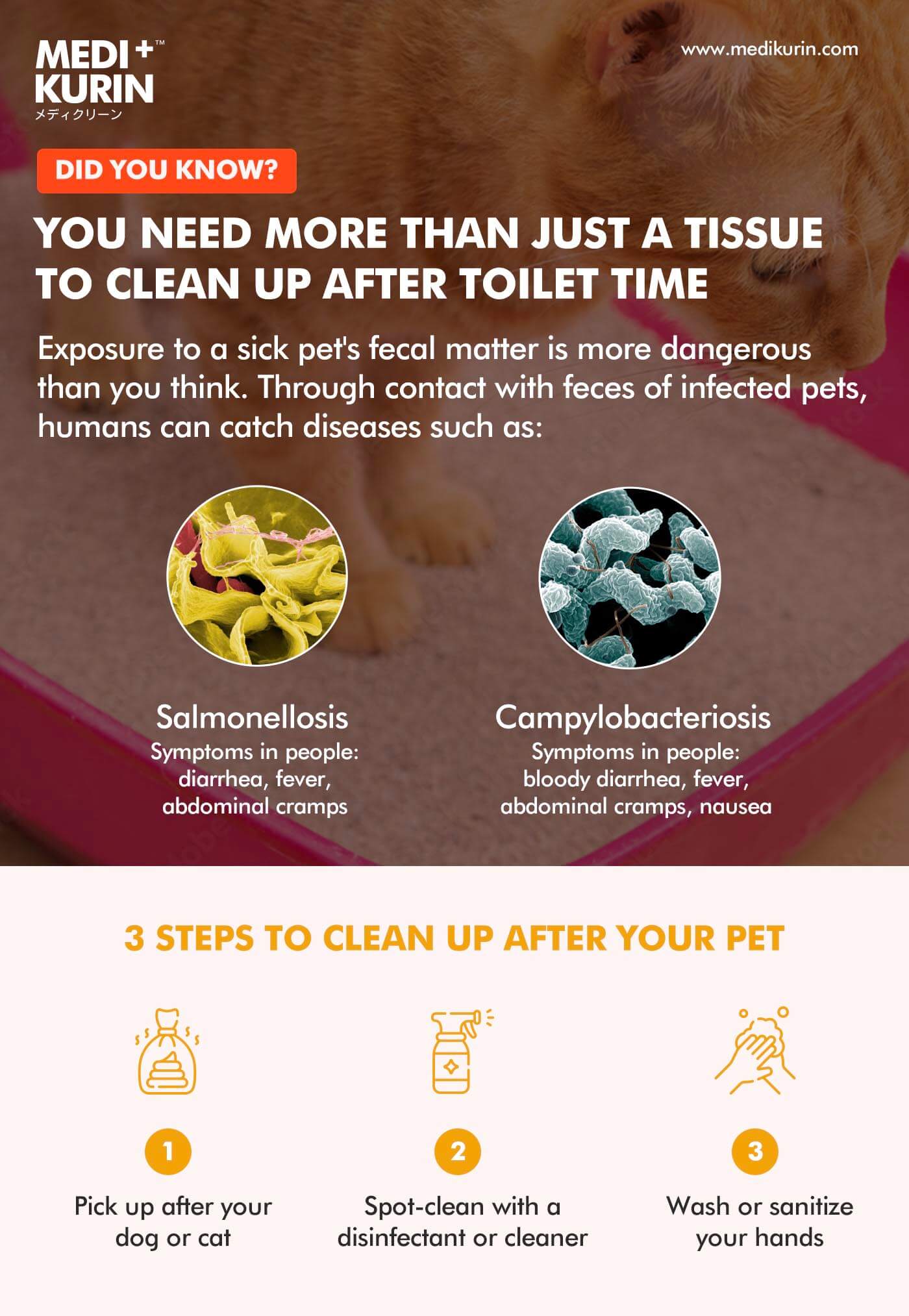
After clearing your pet’s poo or pee, it’s important to use a strong disinfectant solution that keeps your environment free from E.coli, Salmonella, and Campylobacter.
To be a responsible pet owner and courteous neighbor, do a thorough clean after your pet relieves themselves. If your litter box or pet toilet area is somewhere public, it’s best to spot-clean the places where your pets poo-ed or peed with MEDIKURIN PettoGard Odor Remover Spray. Simply wipe off excess stains or absorb the urine with a tissue, and then spray the spot, leaving the solution to dry up and kill the germs.
For litter box areas, remove the waste from the sand and spray the air around the litter box to remove any odor that had been puffed up into the air or on the sand itself.
5. Remember to help keep your pet’s private parts clean, too!
Do you know why dogs and cats lick and fuss over their young so much? Not only is this habit a way of bonding between the mother and child, but it’s also how animals teach their young how to keep themselves clean. Still, dog owners should take extra care in cleaning their dog’s anuses after they poo.
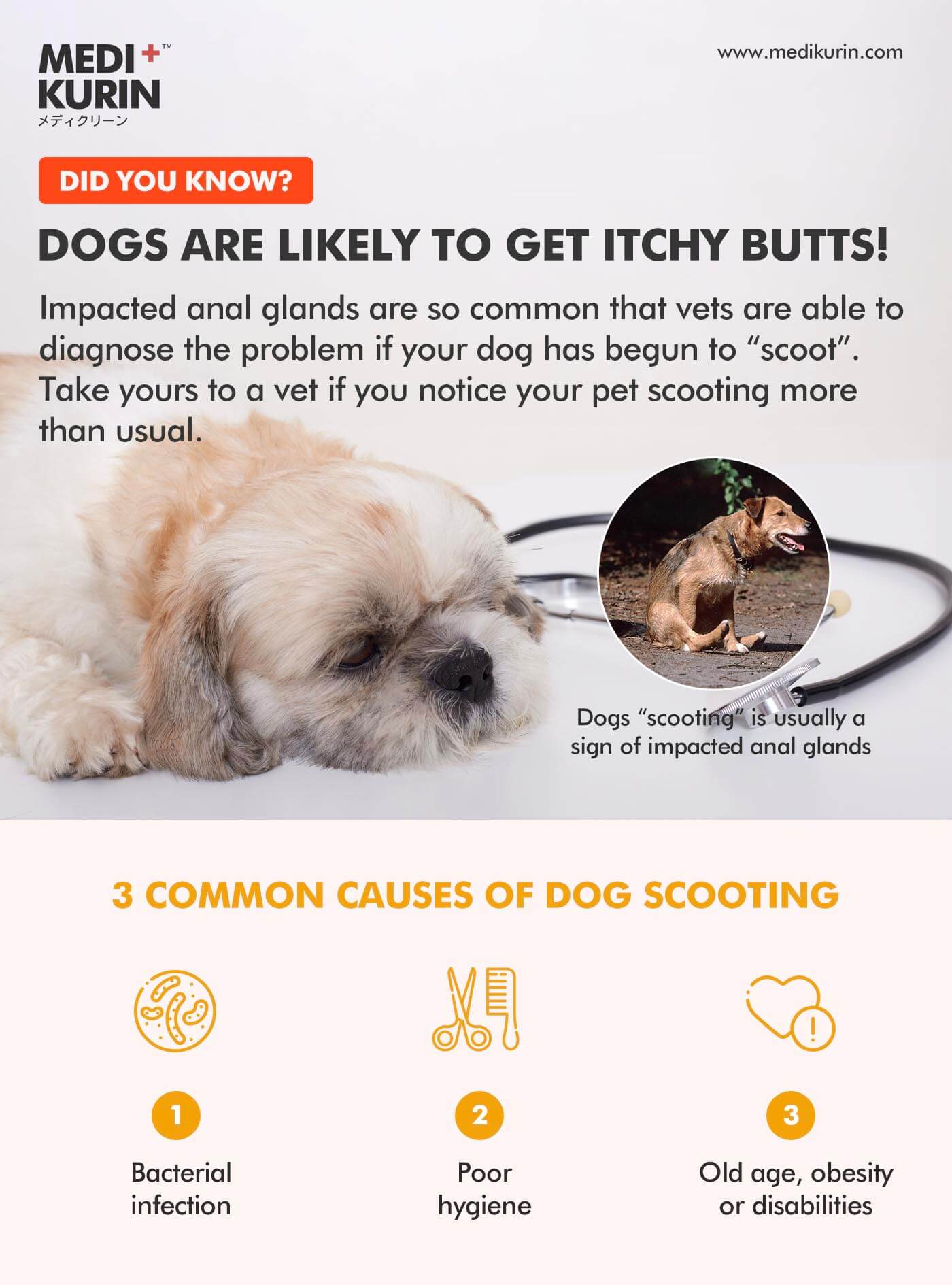
Some dogs require extra care with cleaning their anal region. This is especially so for older, obese, or disabled dogs who may not be able to clean themselves. If they’re unlucky, their anal gland is likely to develop a bacterial infection. Usually, your groomer will help make sure your pet’s anal glands are clear during bath time, but you can also take up this responsibility at home.
Help your dog keep a healthy, infection-free butt with MEDIKURIN Antimicrobial Skin Care & Wound Spray for Dogs. Our non-irritating, gentle wound disinfectant can be used to flush out the bacteria build up in your dog’s anal glands. Not only that, but our HOCl ingredient has also been tested to help soothe inflamed skin as well as speed up any cuts, blisters, and wounds that may have formed over time.
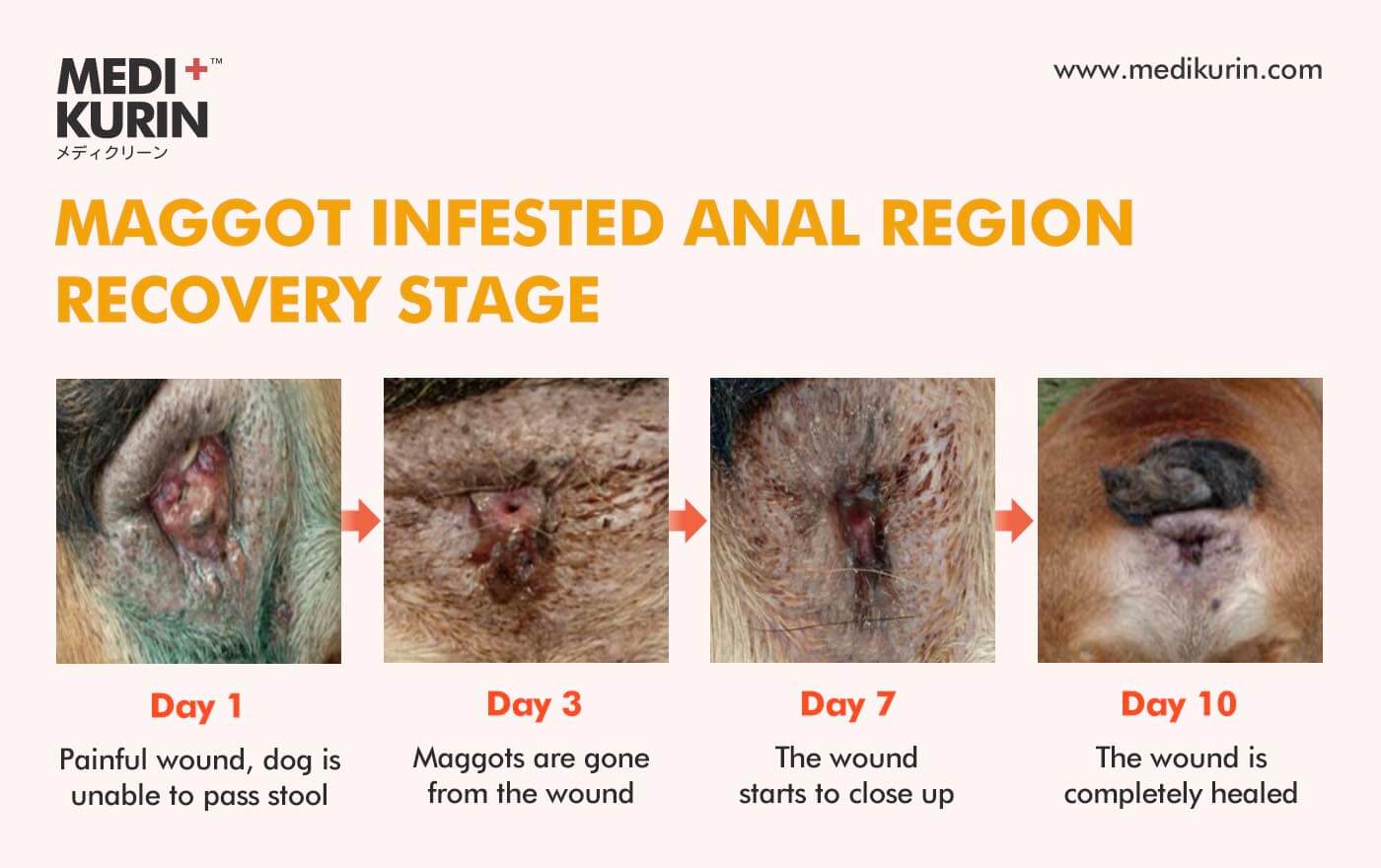
In the past, we have also helped pet owners solve their dog’s severely infected anal region problems by using our solution on a daily basis for 10 days. These case study photos were provided by a pet owner whose dog’s anal region had got infested with maggots. This infestation had caused issues for the dog during toilet time and had to be closely cared for by the owner. Our solution was able to flush out wound debris, wash out pus, fecal matter, and prevent further infection by killing off any bacteria that may form on the dog’s anal region over time.
Upkeep your pet’s (and home’s) hygiene by playing an active role in keeping their environment clean.
Owning a pet is not all just fun and games all day, it’s an important responsibility that comes with a lot of additional care. While you may try your best to provide your pets with a hygienic environment, sometimes it takes more than just mopping the floor with conventional household cleaners. As you know, conventional detergents, soaps, and floor cleaners use harsh chemicals that will irritate your pet’s skin.
That’s why MEDIKURIN PettoGard HOCl solutions are specially formulated to help pet owners solve issues their pets face. Our solutions are pH-neutral, and non-irritating disinfectants and deodorizers for homes. We’ve come up with sprays catered specifically for wound care, skincare, and environmental disinfection.
Looking to create a healthy, cleaner home for happy pets? Browse through our products page to learn more about what we have to offer.
References
“How Do People Get Infected With Capnocytophaga? | Capnocytophaga | CDC”. 2021. Cdc.Gov. https://www.cdc.gov/capnocytophaga/transmission/index.html.
“How Dog And Cat ‘Kisses’ Can Turn Deadly”. 2021. Science. https://www.nationalgeographic.com/science/article/dogs-cats-clean-licking-bacteria-health-science.
THOMAS, MERLYN, and YAOHUA FENG. 2020. “Risk Of Foodborne Illness From Pet Food: Assessing Pet Owners’ Knowledge, Behavior, And Risk Perception”. Journal Of Food Protection 83 (11): 1998-2007. doi:10.4315/jfp-20-108.
Jones, Jennifer L., Leyi Wang, Olgica Ceric, Sarah M. Nemser, David S. Rotstein, Dominika A. Jurkovic, and Yamir Rosa et al. 2019. “Whole Genome Sequencing Confirms Source Of Pathogens Associated With Bacterial Foodborne Illness In Pets Fed Raw Pet Food”. Journal Of Veterinary Diagnostic Investigation 31 (2): 235-240. doi:10.1177/1040638718823046.
“Raw Or Undercooked Animal-Source Protein In Cat And Dog Diets”. 2021. American Veterinary Medical Association. https://www.avma.org/resources-tools/avma-policies/raw-or-undercooked-animal-source-protein-cat-and-dog-diets.
